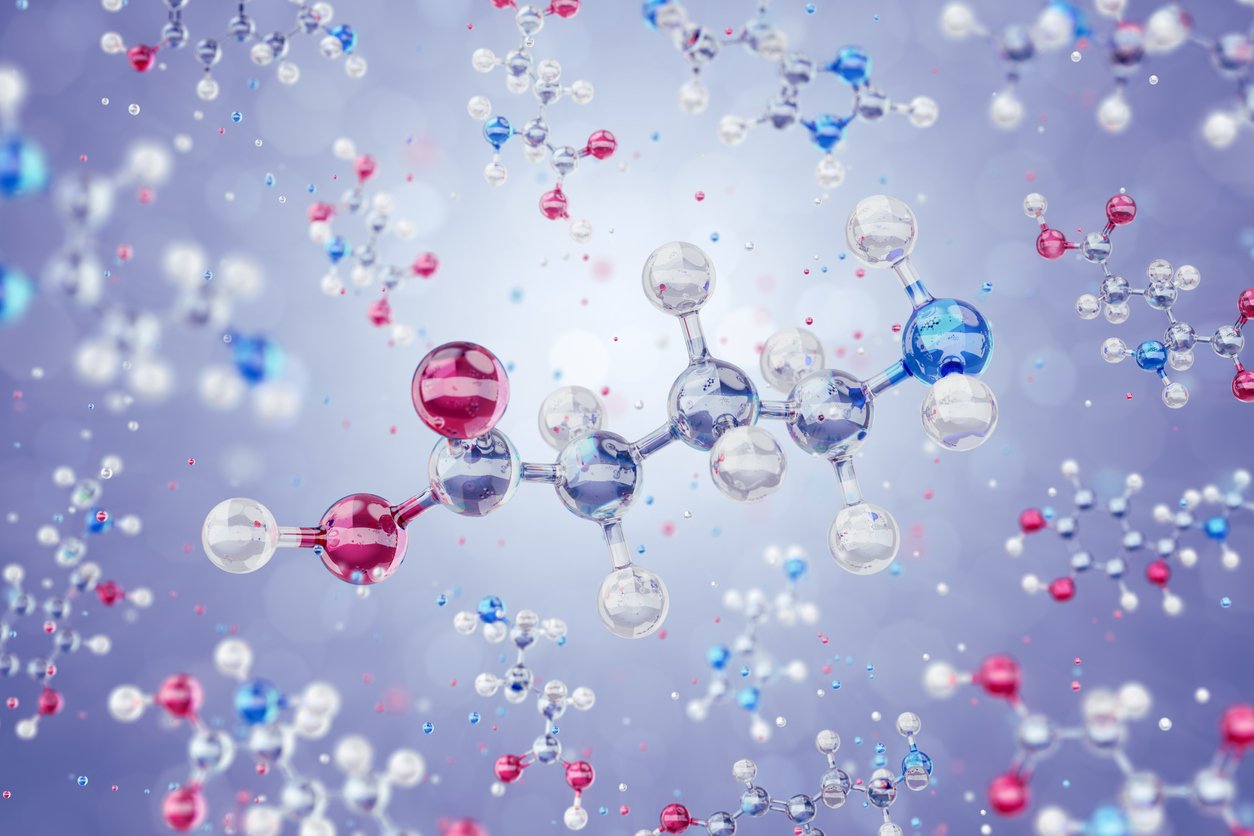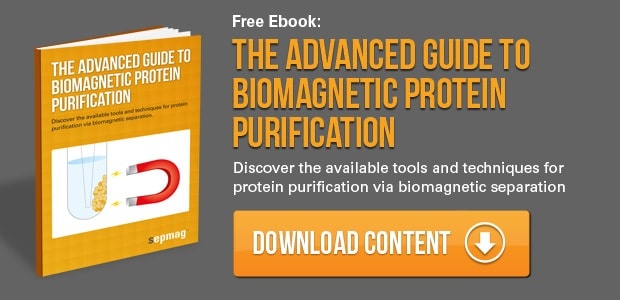With the advent of pharmaceutical biotechnologies in recent years proteins and peptides have been the main focus of numerous studies by researchers and companies. Peptide and proteins have various physiological functions in body (as hormones, enzyme substrates and inhibitors, biological regulators, structural components, signaling factors, catalyzers), peptide/protein-based drugs and biopharmaceuticals are a novel category of drugs, and any abnormality in their amino acid sequence or structural dysfunction can lead to severe diseases and pathological conditions (dwarfism, cystic fibrosis, thalassemia etc).
Hence, the isolation, recovery and purification of various types of proteins/peptides from samples (such as crude cell lysates, whole blood, plasma, ascites fluid, milk, whey, urine, cultivation media, wastes from food and fermentation industry) is the first essential step in downstream processing to understand their structure and function for further developments in biomedical research and biotechnology industry. There are currently various protein/peptide purification techniques using chromatography, electrophoretic, ultrafiltration, precipitation and affinity chromatography.
In recent years, magnetic affinity utilizing magnetic beads and separation techniques are introduced which are capable of treating dilute solutions or solutions containing only minute amounts of target molecules in the presence of vast amounts of accompanying compounds in both small and large-scale processes, even in the presence of particulate matter which is an advantage compared to standard column liquid chromatography procedures.
How Protein Purification works
Protein purification is the process of enriching the population of a single target protein from a sample of many mixed proteins. The reason we say enriched rather than isolated is because it is difficult to obtain a perfectly pure population of a single protein from a mixed sample. However, a pure population is still the goal, and we can get quite close.
Protein purification works by taking advantage of the properties that make the target protein unique or different from other proteins in the mixed sample. These properties can be electrostatic (based on isoelectric point and charge depending on buffer pH), solubility in different salt concentrations, size, and specific binding affinity. Many of these properties can be targeted throughout a protein purification protocol, and are often used sequentially to obtain increasingly enriched populations of target.
The steps involved in protein purification
- Preparation
- Purification
- Verification
Preparation
The first step in protein purification is to release the proteins from any cellular membranes that they might be sequestered inside of. Differential centrifugation can be used to obtain an enriched population of target cells or cellular organelles. These cells or cell organelles will then need to be lysed (breaking their membranes) in order to release the proteins. Cell lysis can be achieved with chemical detergents or with physical methods such as sonication. After lysis, the sample can be cleaned up with gradient centrifugation in order to remove cell debris. Keep in mind that these steps are rough cleanup steps. The fine-tooth comb of protein purification comes later.
Purification
There are a handful of commonly used protein purification methods:
- Salting out (solubility)
As salt concentration increases, proteins with lower solubility will precipitate out of solution. - Dialysis (size)
Dialysis tubing or membranes can be purchased with various pore sizes based on molecular weight (Daltons or KiloDaltons). Proteins below the molecular weight cutoff (MWCO) will diffuse from the sample to the dialysate. Larger proteins above the MWCO will be retained within the dialysis membrane. - Gel-filtration chromatography (size)
A porous resin in prepared and the protein solution passes through it. The smaller proteins enter into the beads and take a slower path through the resin. The larger proteins move in the spaces between the beads and are eluted first. - Ion-exchange chromatography (charge)
This is based on the isoelectric point of the protein, which is determined by the amino acid composition. If one protein has an overall positive charge at pH 7, and another protein has an overall negative charge at pH 7, then the positively charged protein will be attracted to a negatively charged column and can be separated from the other protein - Affinity Chromatography (binding affinity)
This takes advantage of binding pockets in the protein and recognition of certain molecules. Some examples include biotin-Streptavidin affinity, His tags, protein A/G chromatography, and antibody-antigen interactions.
Verification
After completing a protein purification method it is a good idea to verify the identity of the enriched protein. Some verification techniques include gel electrophoresis and mass spectrometry. Unfortunately, both of these techniques rely on a knowledge of the exact mass of the target protein. Additionally, activity assays may be performed with proteins that have known activity with certain molecules or other proteins.
Principles of magnetic protein/peptide purification
Magnetic beads are synthesized with an immobilized affinity or hydrophobic ligand or ion-exchange groups or magnetic biopolymer particles which have affinity toward the biomolecule of interest (e.g. protein, peptide) in the sample. They are mixed with the sample containing target compound(s). Following an incubation period when the target compound(s) bind to the magnetic particles the whole magnetic complex is easily and rapidly removed from the sample using an appropriate magnetic separator. After washing out the contaminants, the isolated target compound(s) can be eluted and used for further work. The magnetic beads are composites (typically >500 nm) of a no-magnetic matrix (polystyrene, silica, PVA) charged with magnetic nanoparticles (usually magnetite about 10 nm).
Surface coating is a feature of magnetic beads rendering them a very useful tool for molecular and immunodiagnostic applications. In surface coating, the surface of the bead is modified with different ligands or chemistries (i.e. affinity ligands) which have affinity toward only a specific cell by recognizing its surface receptor. This in turn minimizes their non-specific binding.
Generally, there are two methods of magnetic affinity separations: Direct Method and Indirect Method. In the direct method, an appropriate affinity ligand is directly coupled to the magnetic beads having the affinity towards a specific target compound(s) (e.g. proteins, peptides etc) which are then added to the sample of the target compound(s) to bind them. In the indirect method the free affinity ligand (sometimes an antibody) is added to the solution or suspension sample to enable the interaction with the target compound. The resulting complex is then bound by appropriate magnetic beads. In case antibodies are used as free affinity ligands, magnetic beads with immobilized secondary antibodies such as protein A or protein G are used for binding the complex. Alternatively the free affinity ligands can be biotinylated and magnetic beads with immobilized streptavidin or avidin are used to bind the complexes formed.
In both methods, magnetic beads with isolated target compound(s) are magnetically separated and then a series of washing steps is performed to remove the majority of contaminating compounds and particles. The target compounds are then usually eluted, but for specific applications, such as molecular biology, bioanalytical chemistry or environmental chemistry, they can be reused still attached to the beads, such as PCR, magnetic ELISA etc.
Advantages of Magnetic Protein/Peptide Purification
Magnetic beads and separation techniques offer several advantages compared with the conventional standard purification techniques:
- Simple process with a few steps in one single test tube;
- No need for expensive equipment;
- Performable on crude samples with no need for liquid chromatography;
- Removing easily all particles and contaminants due to their diamagnetic properties;
- Efficient for large-scale procedures;
- Gentle method toward the target protein/peptide with low shearing forces;
- High protein/peptide concentration in the final yield;
- Choice of magnetic beads based on the concentration of the diluted protein/peptide solution;
- High selectivity and recovery of the protein/peptide of interest;
- Quick and convenient procedure;
- Low amount of non-specific binding of non-target molecules.
Related news





